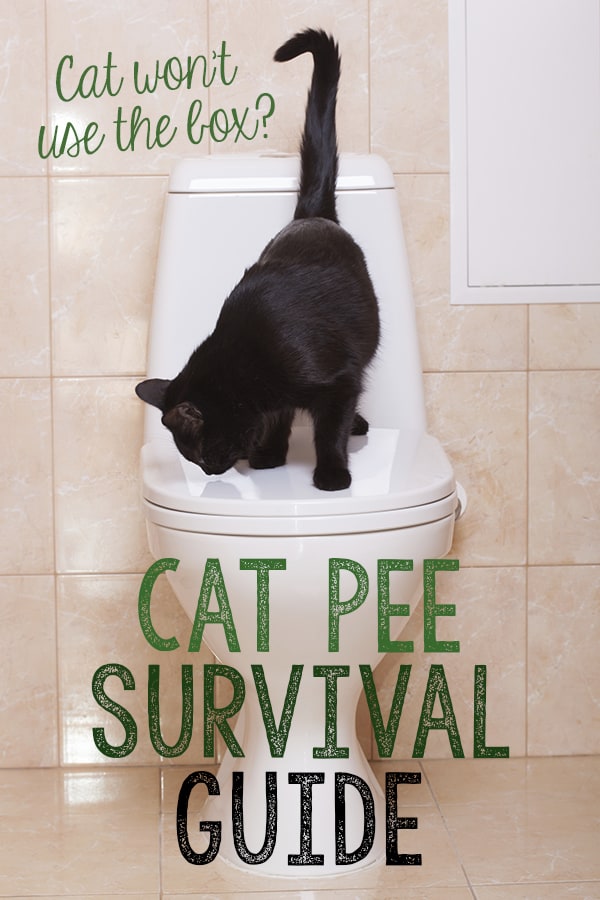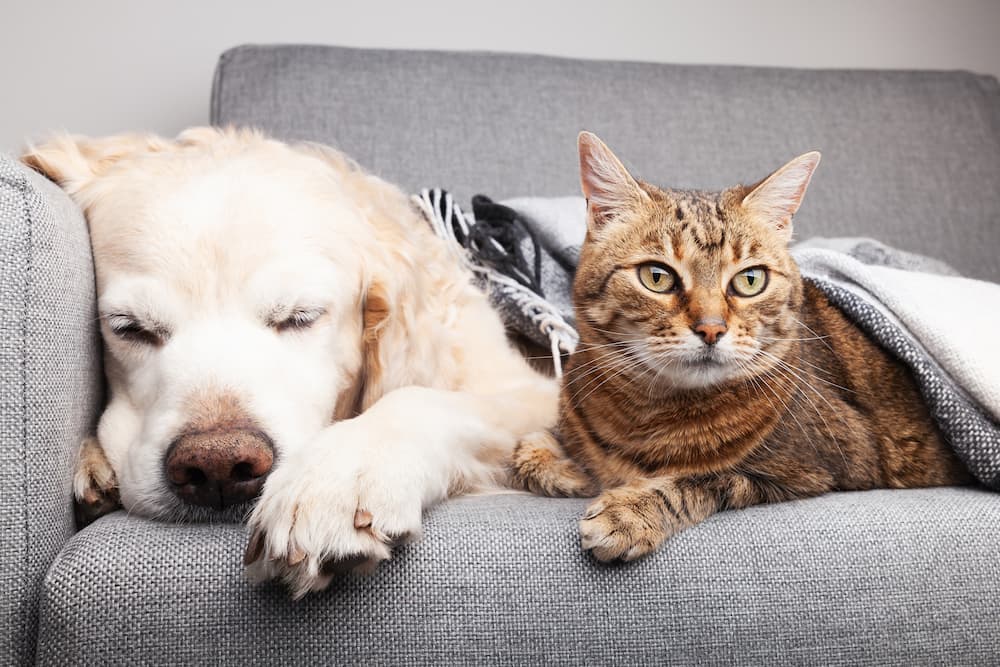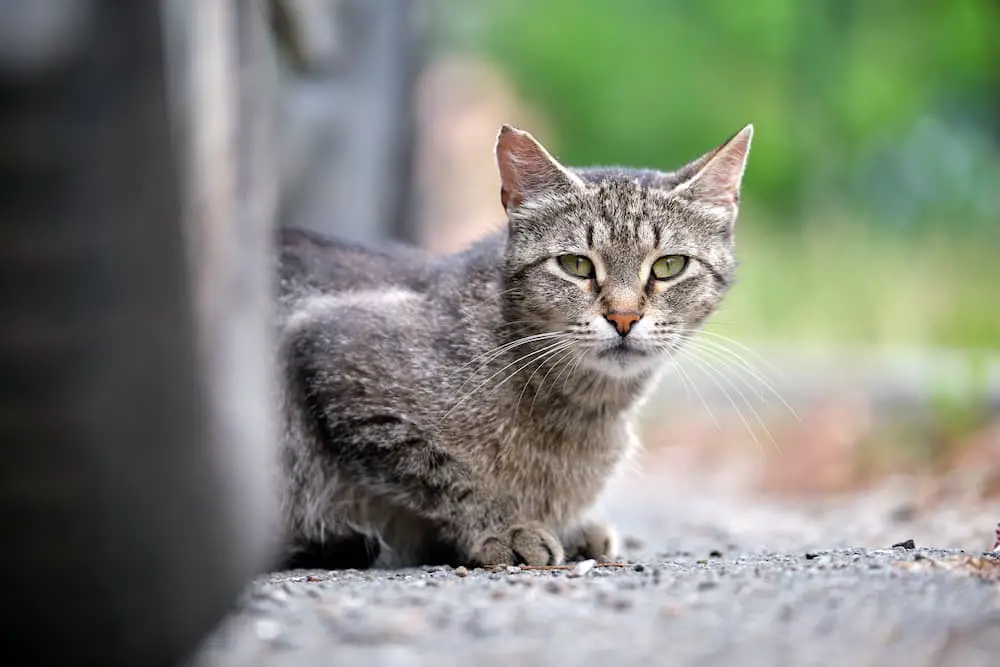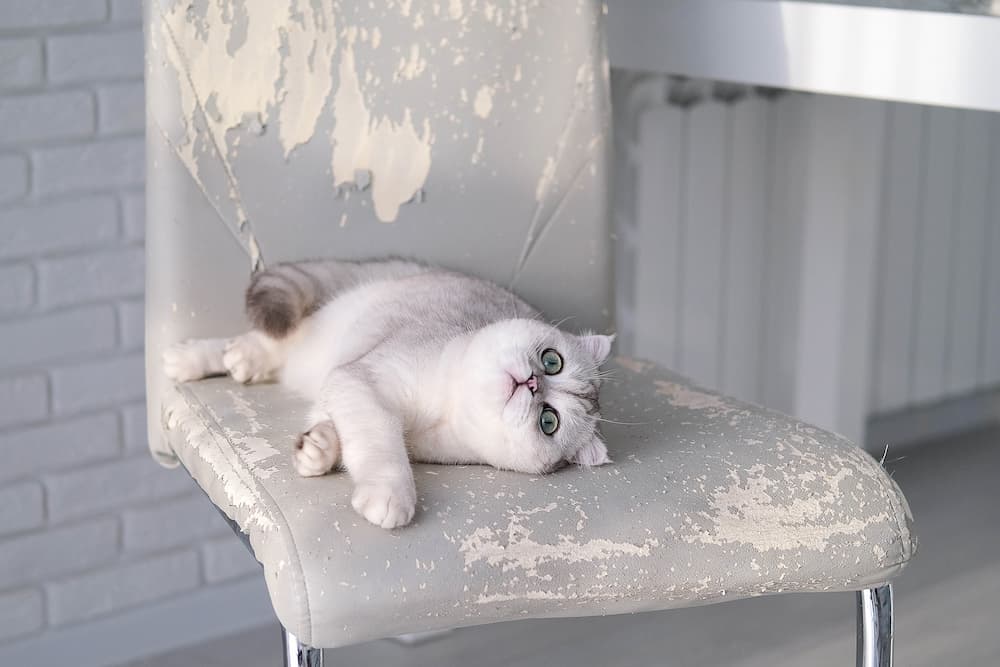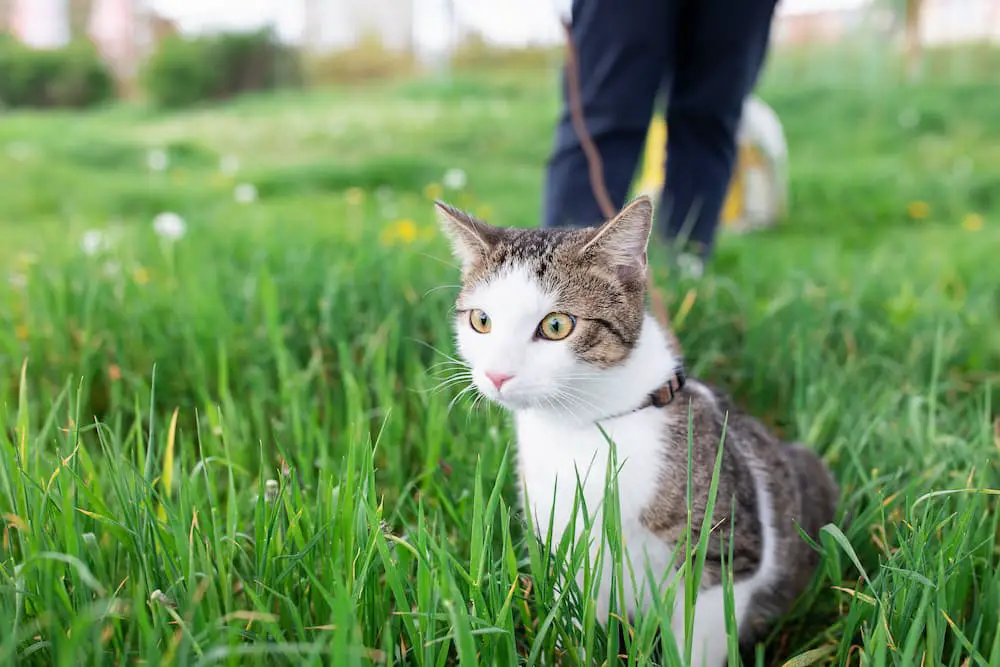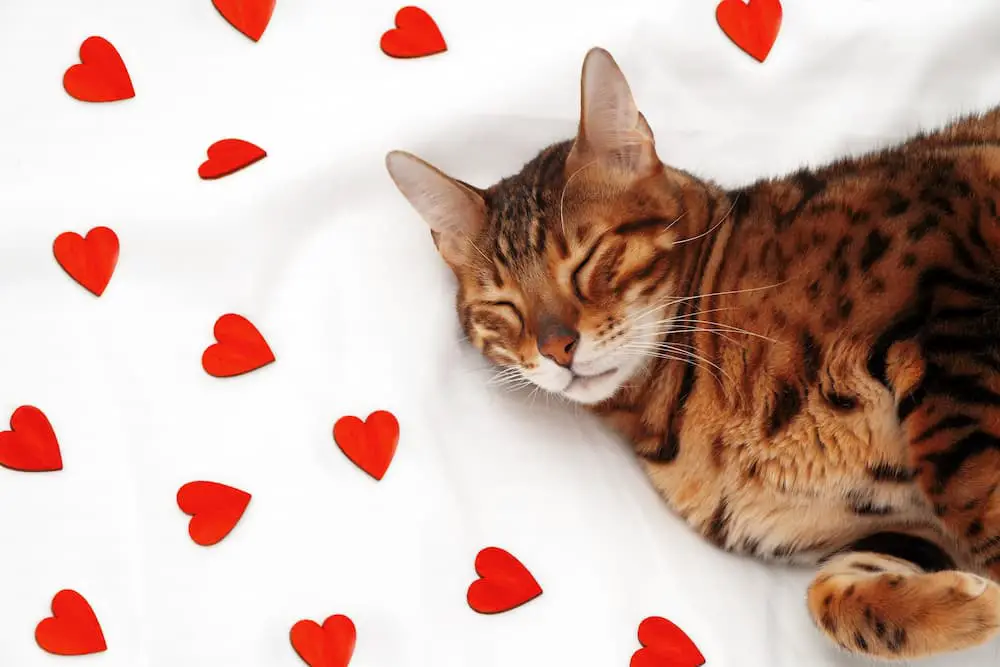If you’re the parent of a cat or kitten that’s starting to use your whole house as a toilet instead of the litter box, it’s important to know why it’s happening, how to stop it, and how to effectively clean it up. Not to fear, this Cat Pee Survival Guide is here to help you figure out why your cat won’t use the litter box.

First Things First… Is there a medical reason?
The very first thing any cat parent should do if their cat stops using the litter box is to determine why. Urinating outside of the box is often an indication that something is wrong and your cat should be seen by a veterinarian to rule out any medical reason – especially if your cat has consistently used a litter box in the past.
Some medical reasons for inappropriate elimination include urinary tract infections, diabetes, kidney failure, kidney infections, and thyroid issues. None of these conditions should go ignored or untreated! And, often times after your cat is diagnosed and treated, he will resume using the litter box.
Behavioral Reasons for not using the litter box:
If your veterinarian determines that there’s no medical reason for inappropriately urinating outside of the box, you’re likely dealing with a behavioral issue – and in some cases, these can be harder to figure out and solve.
Cats are very sensitive and complex creatures. Here are some of the behavioral reasons a kitty may stop using the litter box:
New Surroundings
Moving to a new home is not only stressful for us – it can wreak havoc on a sensitive kitty! Try to see things from your cat’s perspective. Make sure he’s surrounded by familiar things from your old home, that you’re using the same litter box and type of litter that you previously used, and that the box is in a similar area that it was located in your old home. You might have luck with pheromone diffusers, like Feliway, to help your kitty transition to all the new surroundings with less stress.
New Pets
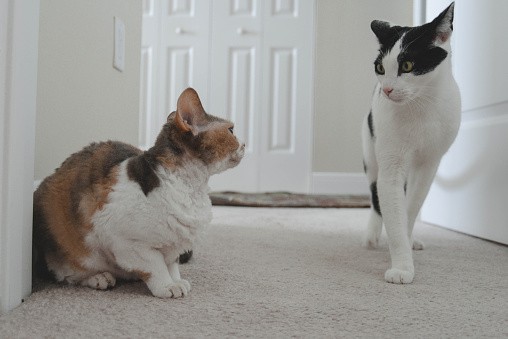
Adding a new cat or dog to the family may make your existing cat feel threatened, and that could cause inappropriate behavior. Make sure each pet has his or her own personal space, bed, and food & water dishes. Keep a new pet separated from your existing kitty for some time so that they have time to slowly adjust to each other’s scent before they meet face to face. And, if you’ve got more than one cat, you should provide a litter box for each cat, plus one additional.
Litter Box Aversion
Some cats may avoid using the litter box simply because they don’t like the litter you’re using, they don’t like the box, or they don’t like where the litter box is located. Some cats are very particular about their litter boxes. Try switching to unscented litter and that you’re scooping the box at least once a day and thoroughly cleaning it every day to keep odors at bay.
Make sure the litter box is in a quiet area of the house and, if you’ve got more than one cat, make sure the box is accessible from more than one direction. If you’re using a covered litter box, try removing the cover as many cats feel trapped inside covered boxes. Also, covered boxes tend to trap odors inside like a smelly port-o-potty – can you blame a cat for not wanting to go in there?
Never punish your cat for urinating outside of the litter box. If it’s because of a medical reason, your cat likely can’t help it. If it’s a behavioral issue, then punishing your kitty very well could make the problem worse.
Cleaning the litter box
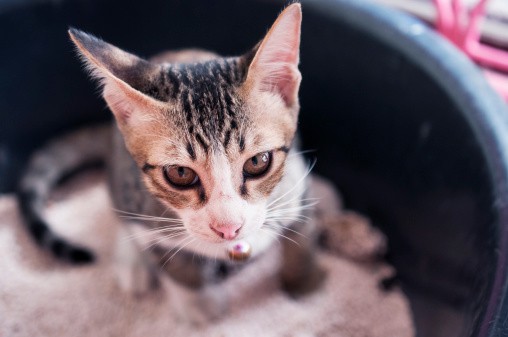
It’s important to realize that cats have a much greater sense of smell than us. For that reason, they can detect urine odors for a long time – even after you’ve cleaned – and once they smell it, they’ll be encouraged to use that same spot to pee. You need to thoroughly clean up cat urine to break the cycle for good.
Find urine stains by using an LED black light. Turn off the lights in your house and shine the black light on carpets, furniture, rugs, and walls to find the source of the problem. Cat urine will glow under the black light.
Once your find urine, you need to properly clean it – not just mask the odor or wipe away the visible stains. We use and recommend Unique Advanced Cat Odor and Stain Remover. To properly eliminate messes you have to remove both the odor and the stain, and Unique cleaners use a blend of naturally occurring, non-pathogenic bacteria (like you find in your yogurt or kombucha) and enzymes whose food source is the animal waste that is causing the stain or odor to do exactly that. Seriously, try it – you’ll be amazed!
What have you tried to get your cat to stop “thinking outside the box?” What worked and what was unsuccessful? Let us know with a comment.
If you found this article helpful, pin it!
